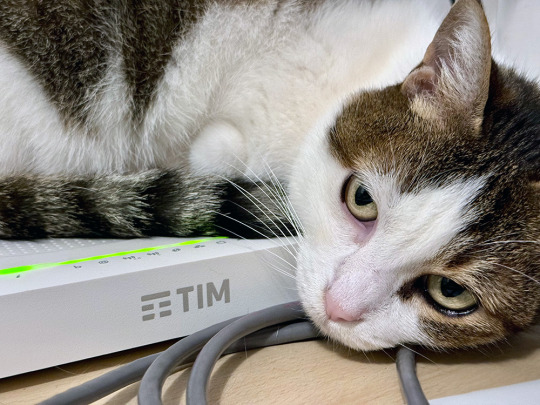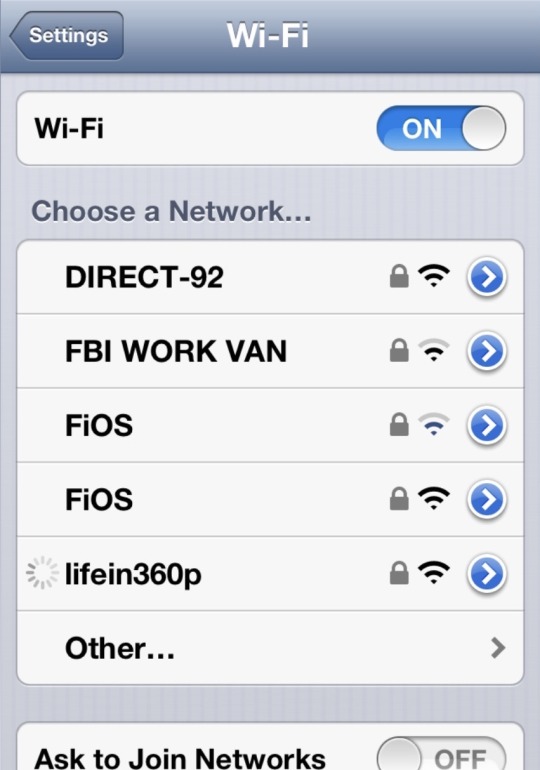#Wi-Fi
Text

Hedy Lamarr was a Hollywood actress in the 40s and 50s, and was considered "the most beautiful woman in the world" during her time.
She began her acting career in Austria and became notorious for being the first woman to simulate an orgasm on screen in 1933. It was during this time that she also got married to Vienna-based arms dealer, Friedrich Mandl who had ties to Mussolini and later, Hitler.
The marriage did not last long as she writes, "I knew very soon that I could never be an actress while I was his wife. ... He was the absolute monarch in his marriage. ... I was like a doll. I was like a thing, some object of art which had to be guarded—and imprisoned—having no mind, no life of its own." According to her autobiography she disguised herself as one of the maids and managed to flee to Paris. Others say she convinced her husband to wear all of her jewelry for a dinner party and then disappeared afterwards.
She eventually booked a liner to New York where she met the head of MGM who was impressed enough to get her a $500 a week contract to work as an actress. In 1938, she arrived in Hollywood and went on to star in several movies, working with the likes of Clark Gable and James Stewart.
Beyond her acting, Lamarr was also a scientist and went on to co-patent spread-spectrun technology during World War 2 to stop the Nazis from jamming navy torpedoes. However, her invention was rejected and wouldn't be implemented until the Cold War in 1962. The technology would eventually also be used in developing Wi-Fi and Bluetooth technology.
History Cool Kids
189 notes
·
View notes
Text




Hedy Lamarr
Color conversions
The World War II-Era Actress Who Invented Wi-Fi: Hedy Lamarr
Lamarr’s path to inventing the cornerstone of Wi-Fi began when she heard about the Navy’s difficulties with radio-controlled torpedoes.
A Movie Star, Some Player Pianos, and Torpedoes
In June 1941, Lamarr and Antheil submitted their patent application for a “Secret Communication System,” which was awarded U.S. Patent No. 2,292,387 in August 1942.
Hedy Lamarr: More Than Glamorous
Lamarr was a “pinup” girl and her face was said to have been the model for Disney’s Snow White. Yet, it was not just her acting skills that were underestimated. She was also an inventor who, along with partner George Antheil, received a patent for a secret communications system they devised, which Lamarr hoped would assist the war effort during World War II. [...] Though she received no compensation for her invention, she did finally receive at least one accolade before her death in 2000, the Electronic Frontier Foundation Pioneer Award in 1997, given to individuals whose creative lifetime achievements in the arts, sciences, business, or invention fields have significantly contributed to society. In 2014, Lamarr and Antheil were also inducted posthumously into the National Inventors Hall of Fame.

#hedy lamarr#colorization#hedwig kiesler#inventors#wi-fi#bluetooth#National Inventors Hall of Fame#George Antheil#frequency hopping
77 notes
·
View notes
Text
You Won’t Type Your Wi-Fi Password into the Tamagotchi Uni

Were you worried about how long it was going to take you to type in your Wi-Fi network password into the new Tamagotchi Uni? You’re not alone. Typing on a Tamagotchi can be difficult and sometimes frustrating, luckily data entry is limited on the device. When we heard about the Tamagotchi Uni connecting to Wi-Fi we were worried about how long it would take us to enter in our Wi-Fi network password, but it seems that Bandai has solved this.
Shigezo on Twitter was able to attend the 2023 Tokyo Toy Show and presumably learned more about the Tamagotchi Uni from the staff. Schigezo writes in a recent tweet that the new Tamagotchi Uni features a mechanism that allows you to enter the Wi-Fi network password from your smart phone. The Tamagotchi Uni will display a QR code which you will scan with your smartphone, you’ll be prompted to enter your Wi-Fi network password, and then the smartphone will communicate back with the Tamagotchi Uni so that you’re connected effortlessly!
How awesome is that? A sigh of relief! It really does look like Bandai has this all thought out, and we’re excited to see that QR codes will still be featured on the Tamagotchi Uni, should we still call them Tama Codes?
#tamapalace#tamagotchi#tmgc#tamagotchiuni#tamagotchi uni#uni#tamatag#virtualpet#bandai#qrcode#qr code#tamacode#tama code#wifi#wi-fi
110 notes
·
View notes
Text
In inverno ho bisogno di più giga...
Dal momento che spesso mi tocca usare lo smartphone come hotspot per collegarmi con il portatile, anche se sono in casa.
Questo perché, quando fa freddo, a Luna piace molto il calore emanato dal router. E, ogni volta che ci si accoccola sopra, preme il pulsante per disattivare il Wi-Fi.
Non potendo, ovviamente, scacciarla, collego il computer tramite lo smartphone finché non lascia libero il router.

A volte, prima di andare via, mi riattiva il Wi-Fi.
21 notes
·
View notes
Text

27 notes
·
View notes
Text
Round 1E

King of the Hill: That boy ain’t right. King of the Hill is an animated television series created by Mike Judge and Greg Daniels that originally aired in 1997. The show is essentially a slice-of-life sitcom that centers around the lives of the Hill family in the fictional town of Arlen, Texas. We tend to spend our time with Hank Hill, a tightly-wound propane salesman, his boisterous wife Peggy, their son Bobby– the fabled boy who ain’t right– and their eclectic group of friends and neighbors. Rooted in dry humor but sincere down-to-earth storytelling, King of the Hill explores the quirks of everyday life in middle America, particularly the colorful characters seen in a politically-divided 90s Texas. The show delves into a wide range of topics, from family dynamics to cultural and societal issues; despite its somewhat meme-worthy status, King of the Hill is critically acclaimed, and it endures in the hearts of fans for its lovable character-driven writing.
Wi-Fi: I need a Mai Tai/so fuckin’ sci-fi/give me the password to the fuckin’ Wi-Fi. Wireless Fidelity, or Wi-Fi, is a technology that allows devices to connect to the internet or other networks wirelessly using radio waves. Though experimentation and development began years prior, it began to see broader adoption and implementation in the late 1990s with the first official Wi-Fi standard, 802.11, being established in 1997 by the Institute of Electrical and Electronics Engineers (IEEE). Wi-Fi technology started appearing in consumer devices and public spaces like coffee shops and airports, revolutionizing the way people access the internet by providing convenient and wireless connectivity. Over the years, Wi-Fi has evolved and become an integral part of our daily lives, connecting everything from smartphones and laptops to smart home devices, and it has significantly changed how we access and use the internet.
7 notes
·
View notes
Text
Listen you're going to start seeing stuff about Wi-Fi reading stuff through walls and some folks are going to make it sound like your modem is going to be reading your mail for the government or something so just to be really clear:
This is specialized equipment "reading" two foot tall metal letters.
It's an interesting science thing but please don't start conspiracy theories about it okay?
9 notes
·
View notes
Text
Tamagotchi Uni Wi-Fi Menu Revealed

The Madrid Tamagotchi Uni party this weekend was a hit! Fans also got hands-on time with the new Tamagotchi Uni, and they were able to gain exposure to much more than the existing demonstrations we’ve seen all over the internet.
One that caught our eye was a picture from EruHonda on Twitter which reveals the Wi-Fi menu on the Tamagotchi Uni. After selecting the Wi-Fi icon (which is the last icon in the menu) you’ll see a screen that provides options for “Input Code” “Collab”, “Items”, and “Update List”.
We asked EruHonda if they had any explanations for these options, but they informed us that the Tamagotchi Uni’s were not connected to the internet at the event, and they were unable to use these options.
#tamapalace#tamagotchi#tmgc#tamagotchiuni#tamagotchi uni#uni#tamatag#virtualpet#bandai#madrid#spain#party#wifi#wi-fi#menu
27 notes
·
View notes
Text
Massive MIMO: The Powerhouse Behind 5G's Speed

In the fast-paced world of technology, the evolution of wireless communication has seen remarkable strides, with each generation surpassing its predecessor in speed, capacity, and efficiency. At the forefront of the 5G revolution stands Massive MIMO (Multiple Input, Multiple Output), a transformative technology that plays a pivotal role in the unprecedented speed and reliability of 5G networks.
Understanding Massive MIMO
Massive MIMO represents a quantum leap in the way wireless communication is orchestrated. Unlike traditional MIMO systems, which typically involve a handful of antennas, Massive MIMO leverages an extensive array of antennas—often numbering in the hundreds—both at the base station and user devices. This sheer abundance of antennas is what gives it the "massive" moniker.
Unraveling the Magic: How Massive MIMO Works
The magic behind Massive MIMO lies in its ability to handle multiple data streams simultaneously. Each antenna in the array serves a distinct purpose, enabling the system to transmit and receive numerous data streams concurrently. This parallel processing capability is a stark departure from previous generations, where the focus was on serial communication.
Furthermore, Massive MIMO employs beamforming, a technique where the antennas work in harmony to direct signals precisely to their intended destinations. This not only enhances the overall signal quality but also mitigates interference, a critical factor in achieving the high data rates promised by 5G.
The Speed Revolution: Massive MIMO and 5G
At the heart of the 5G revolution is the need for speed, and Massive MIMO is the linchpin that enables this breakthrough. With its ability to transmit and receive data in parallel across a multitude of antennas, Massive MIMO brings about a substantial increase in network capacity. This translates to faster data rates and lower latency, the twin pillars upon which the promise of 5G rests.
In practical terms, the deployment of Massive MIMO means that more users can connect to the network simultaneously without sacrificing performance. This is particularly crucial in densely populated areas, such as urban centers and stadiums, where traditional networks often struggle to meet the demand for high-speed data.
Efficiency and Spectrum Utilization
Another key aspect of Massive MIMO's prowess is its efficiency in spectrum utilization. By leveraging a multitude of antennas, the technology allows for the spatial separation of signals, effectively expanding the network's capacity without requiring additional frequency spectrum. This spectral efficiency is a game-changer, enabling service providers to make the most of their available resources and deliver faster, more reliable connections to users.
The Future of Connectivity: Beyond 5G
While Massive MIMO is already a cornerstone of 5G networks, its journey doesn't end there. As the world anticipates the arrival of 6G and beyond, Massive MIMO is expected to play an even more central role. The relentless pursuit of faster speeds, lower latency, and ubiquitous connectivity will continue to drive innovations in wireless communication, and Massive MIMO will likely be at the forefront of these advancements.
Challenges and Opportunities
While Massive MIMO heralds a new era in wireless communication, it is not without its challenges. The deployment of such a vast number of antennas poses logistical and technical hurdles. Moreover, the increased complexity of Massive MIMO systems demands sophisticated signal processing algorithms and robust hardware.
However, these challenges also present opportunities for innovation. Researchers and engineers are actively working to overcome these obstacles, paving the way for the widespread adoption of Massive MIMO and ensuring that its benefits are accessible to users around the globe.
Conclusion:
In summary, Massive MIMO stands as the linchpin of 5G's revolutionary speed, shaping the future of connectivity. As we delve into the era of High-Speed 5G in Michigan and beyond, this transformative technology, with its multitude of antennas and parallel data processing capabilities, emerges as the unsung hero. It not only propels us into an age of faster, more reliable communication but also addresses the challenges of increasing network demands in densely populated areas.
Massive MIMO's role in enhancing spectrum utilization and paving the way for 6G underscores its significance beyond the current 5G landscape. As the world anticipates the boundless possibilities of connected ecosystems, Massive MIMO stands tall, promising to be the powerhouse that fuels the next chapter in the evolution of wireless communication.
2 notes
·
View notes
Text


Free Wifi … I could chill by the pool and listen to all of my favourite podcasts 🎧
13 notes
·
View notes
Text

Hedy Lamarr was considered one of the most beautiful women in Europe. Born as Hedwig Eva Maria Kiesler in 1914 in Vienna, Austria-Hungary, by the 1930’s she was a film star in Europe and not long after, in the U.S. Additionally, Hedy became an inventor.
Inspired to help the U.S. effort in WWII, she worked to design a radio guidance system for Allied torpedoes that would defeat the threat of jamming.
Ultimately her innovation was not used in the war, but the principles of her work are now incorporated into modern Wi-Fi, CDMA and Bluetooth technology. On August 11, 1942 Hedy Lamarr received a patent for her 'frequency hopping communication system' - the basis of much of today's wireless technology. She was inducted into the National Inventors Hall of Fame in 2014.
Humans of Judaism
40 notes
·
View notes
Text

Apple iPad (9th Generation) - A13 Bionic, 10.2" Retina Display, 64GB, Wi-Fi, 12MP/8MP Camera, Touch ID, Space Gray.
Now price : USD 248.39
Featured brands | Shipped within 72 hrs.
Free shipping | Free returns.
Check the Link for more info : https://amzn.to/47rq9yJ
Get ready to immerse yourself in the world of advanced technology with the Apple iPad (9th Generation). Powered by the A13 Bionic chip, this iPad delivers lightning-fast performance, making it perfect for all your everyday tasks, from browsing the web to creating content. The 10.2-inch Retina Display brings your photos, videos, and games to life with stunning clarity and vibrant colors.
With 64GB of storage, you'll have plenty of space to store your favorite apps, movies, and documents. The Wi-Fi capability ensures seamless internet connectivity, allowing you to stay connected wherever you go. Capture beautiful selfies and stunning photos with the 12-megapixel front camera and 8-megapixel back camera, and unlock your iPad effortlessly with the Touch ID fingerprint sensor.
Equipped with an all-day battery life, this iPad keeps up with your busy schedule, giving you the freedom to work, play, and explore without worrying about running out of power. The sleek and stylish Space Gray design adds a touch of elegance to your device, making it a perfect companion for both work and leisure.
3 notes
·
View notes


